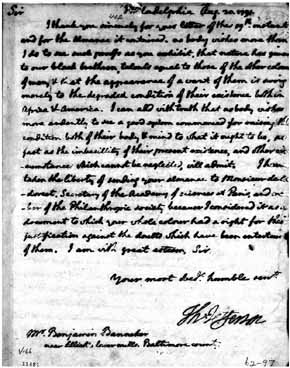| Author | Message |
Feb. 10 Black History Month Person of the Day 
Benjamin Banneker Benjamin Banneker, the son of Robert and Mary Bannaky was born in 1731. His grandfather was a slave from Africa and his grandmother, an indentured servant from England. His grandfather was known as Banna Ka, then later as Bannaky, his grandmother as Molly Walsh. His grandmother was a maid in England who had been sent to Maryland as an indentured servant. When she finished her seven years of bondage, she bought a farm along with two slaves to help her take care of it. Walsh freed both slaves and married one, Bannaky. They had several children, among them a daughter named Mary. When Mary Bannaky grew up, she bought a slave named Robert, married him and had several children, including Benjamin. Benjamin Banneker grew up on the family farm. Around town it was known as "Bannaky Springs" due to the fresh water springs on the land. Bannaky used ditches and little dams to control the water from the springs for irrigation. His work was so reliable that the Bannaky's crops flourished even in dry spells. The family of free blacks raised good tobacco crops all the time. Molly, Banneker's grandmother, taught him and his brothers to read, using her Bible as a lesson book. There was no school in the valley for the boys to attend. Then one summer, a Quaker school teacher came to live in the valley. He set up a school for boys. Benjamin Bannaky attended this school. The schoolmaster changed the spelling of his name to Banneker. At school he learned to write and do simple arithmetic. When Banneker was twenty-one, a remarkable thing happened: he saw a patent watch. The watch belonged to a man named Josef Levi. Banneker was absolutely fascinated with the watch. He had never seen anything like it. Levi gave Banneker his watch. This was to change his life. Banneker took the watch apart to see how it worked. He carved similar watch pieces out of wood and made a clock of his own; the first striking clock to be made completely in America. Banneker's clock was so precise it struck every hour, on the hour, for forty years. His work on the clock led him to repair watches, clocks and sundials. Banneker even helped Joseph Ellicott to build a complex clock. Banneker became close friends with the Ellicott brothers. They lent him books on astronomy and mathematics as well as instruments for observing the stars. Banneker taught himself astronomy and advanced mathematics. Banneker's parents died, leaving him the farm since his two sisters had married and moved away. Banneker built a "work cabin" with a skylight to study the stars and make calculations. Working largely alone, with few visitors, he compiled results which he published in his Almanac. Around this time, Major Andrew Ellicott, George Ellicott's cousin, asked Banneker to help him survey the "Federal Territory". Banneker and Ellicott worked closely with Pierre L'Enfant who was the architect in charge of planning Washington D.C. L'Enfant was suddenly dismissed from project, due to his temper. When he left, he took the plans with him. Banneker recreated the plans from memory, saving the U.S. government the effort and expense of having someone else design the capital. Although Banneker studied and recorded his results until he died, he stopped publishing his Almanac due to poor sales. Banneker died on Sunday, October 9, 1806. For years he has been referred to as "the first Negro Man of Science". 

In 1980, the U.S. Postal Service issued a postage stamp in his honor. 
A letter from Thomas Jefferson to Benjamin Banneker. | |
- E-mail - orgNote -  Report post to moderator Report post to moderator |
i appreciate this but, why ar ewomen buying husbands?
BLACK HISTORY, BITCH! Dynamic Savior Said: Also, do you think that ugly people are God's cruel joke on humanity (like the platypus and the heterosexual) or another form of population control? | |
- E-mail - orgNote -  Report post to moderator Report post to moderator |
- E-mail - orgNote -  Report post to moderator Report post to moderator |
 New topic
New topic Printable
Printable